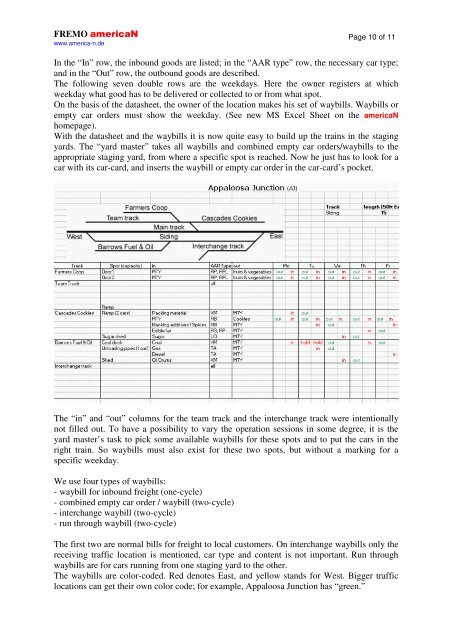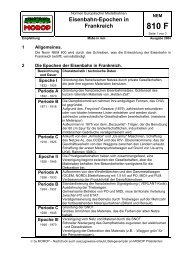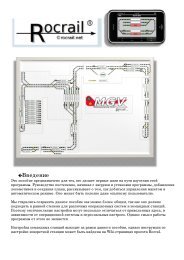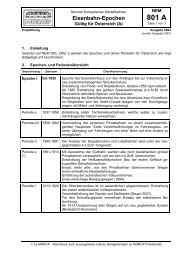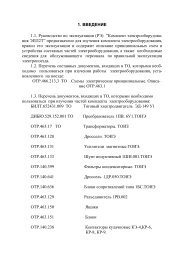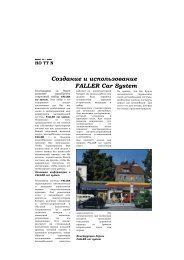Standards for the FREMO modular system
Standards for the FREMO modular system
Standards for the FREMO modular system
You also want an ePaper? Increase the reach of your titles
YUMPU automatically turns print PDFs into web optimized ePapers that Google loves.
<strong>FREMO</strong> americaN<br />
www.america-n.de<br />
Page 10 of 11<br />
In <strong>the</strong> “In” row, <strong>the</strong> inbound goods are listed; in <strong>the</strong> “AAR type” row, <strong>the</strong> necessary car type;<br />
and in <strong>the</strong> “Out” row, <strong>the</strong> outbound goods are described.<br />
The following seven double rows are <strong>the</strong> weekdays. Here <strong>the</strong> owner registers at which<br />
weekday what good has to be delivered or collected to or from what spot.<br />
On <strong>the</strong> basis of <strong>the</strong> datasheet, <strong>the</strong> owner of <strong>the</strong> location makes his set of waybills. Waybills or<br />
empty car orders must show <strong>the</strong> weekday. (See new MS Excel Sheet on <strong>the</strong> americaN<br />
homepage).<br />
With <strong>the</strong> datasheet and <strong>the</strong> waybills it is now quite easy to build up <strong>the</strong> trains in <strong>the</strong> staging<br />
yards. The “yard master” takes all waybills and combined empty car orders/waybills to <strong>the</strong><br />
appropriate staging yard, from where a specific spot is reached. Now he just has to look <strong>for</strong> a<br />
car with its car-card, and inserts <strong>the</strong> waybill or empty car order in <strong>the</strong> car-card’s pocket.<br />
The “in” and “out” columns <strong>for</strong> <strong>the</strong> team track and <strong>the</strong> interchange track were intentionally<br />
not filled out. To have a possibility to vary <strong>the</strong> operation sessions in some degree, it is <strong>the</strong><br />
yard master’s task to pick some available waybills <strong>for</strong> <strong>the</strong>se spots and to put <strong>the</strong> cars in <strong>the</strong><br />
right train. So waybills must also exist <strong>for</strong> <strong>the</strong>se two spots, but without a marking <strong>for</strong> a<br />
specific weekday.<br />
We use four types of waybills:<br />
- waybill <strong>for</strong> inbound freight (one-cycle)<br />
- combined empty car order / waybill (two-cycle)<br />
- interchange waybill (two-cycle)<br />
- run through waybill (two-cycle)<br />
The first two are normal bills <strong>for</strong> freight to local customers. On interchange waybills only <strong>the</strong><br />
receiving traffic location is mentioned, car type and content is not important. Run through<br />
waybills are <strong>for</strong> cars running from one staging yard to <strong>the</strong> o<strong>the</strong>r.<br />
The waybills are color-coded. Red denotes East, and yellow stands <strong>for</strong> West. Bigger traffic<br />
locations can get <strong>the</strong>ir own color code; <strong>for</strong> example, Appaloosa Junction has “green.”


